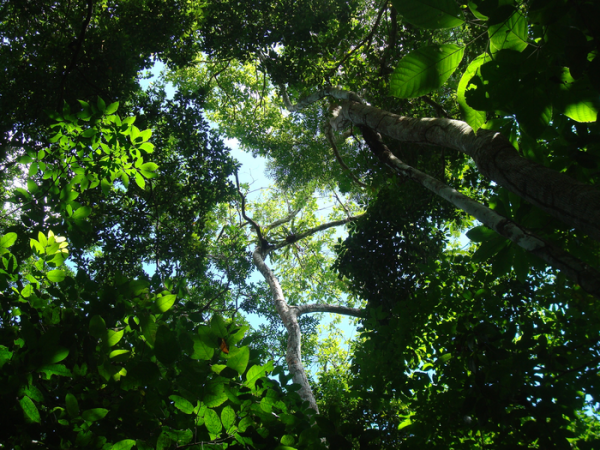The ability of tropical forests to grow and store carbon is limited, in part, by herbivory. Insects and other animals prefer to feed on nitrogen-fixing trees, reducing the success of fixers and the nitrogen they provide. So reports a new paper out this week in the journal Nature, which recommends accounting for herbivory constraints on nitrogen-fixing trees in climate models and projections of the tropical forest carbon sink.
By partnering with soil microbes, nitrogen-fixing trees turn atmospheric nitrogen gas into a form of nitrogen that is available to plants. When fixers shed their leaves, they enrich soils with nitrogen, benefitting nearby plants. In nitrogen-poor tropical forests, nitrogen-fixing trees are the main source of new nitrogen to soils. Yet they are also rare.
Sarah Batterman, a Tropical Forest Ecologist at Cary Institute of Ecosystem Studies and co-author on the paper, explains, “Tree growth in many tropical forests is limited by lack of nitrogen. Given the substantial benefit of nitrogen to these forests, it has long been a mystery why nitrogen-fixing trees represent just 5-15% of trees. We suspected that herbivores might be preferentially targeting fixers due to their nutritious, nitrogen-rich leaves.”
Read more at: Cary Institute of Ecosystems Studies
Nitrogen-fixing trees can fertilize the soil with the help of partner bacteria. It has remained a puzzle why these trees do not become more prevalent in nitrogen-poor tropical forests. This study suggests that herbivory by animals may be the answer. (Photo Credit: Sarah Batterman)


